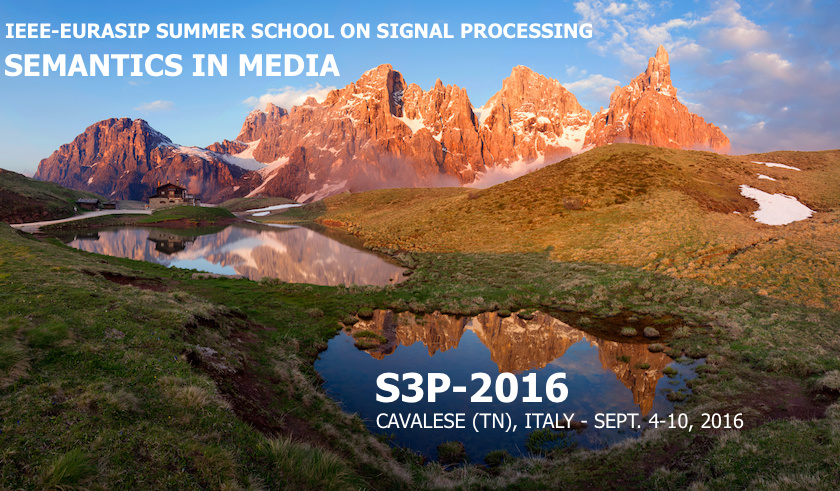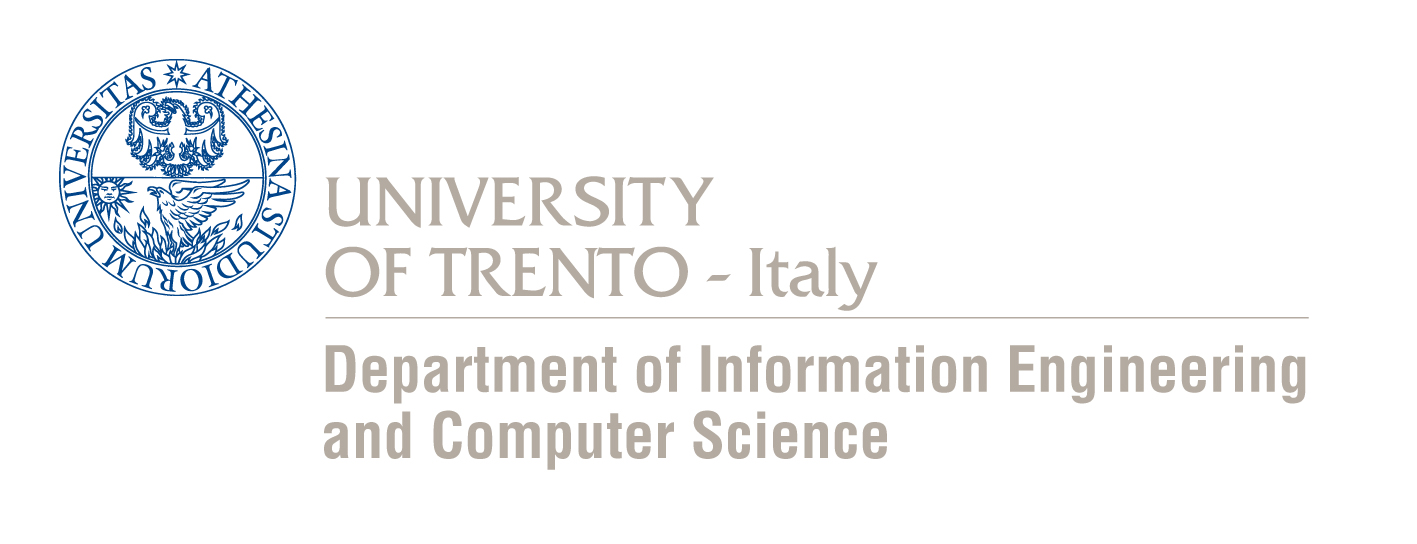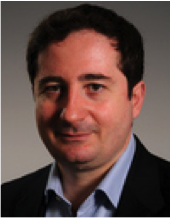 Camera coalitions
Camera coalitions
Andrea Cavallaro (Queen Mary Univ. of London, UK).
Cameras are everywhere. Miniature high-quality cameras are increasingly worn by people, mounted on dashboards
and micro-drones, omnipresent in hallways, streets and stores; and in your smartphone. Countless applications
will benefit from the capabilities offered by networks of wireless cameras that can autonomously sense,
compute, decide and communicate. These networks are composed of cameras whose algorithms need to adapt in
response to unknown or dynamic environments and to changes in the assigned task. In this lecture I will present
recent methods for cameras to move and to interact locally based on content and context, and to form
coalitions that reach coordinated decisions under resource and physical constraints. I will discuss how
cameras self-evaluate their performance and improve the quality of the task they are executing through
collaboration, adaptively.
Andrea Cavallaro is Professor of Multimedia Signal Processing and Director of the Centre
for Intelligent Sensing at Queen Mary University of London, UK. He received his Ph.D. in Electrical Engineering
from the Swiss Federal Institute of Technology (EPFL), Lausanne, in 2002. He was a Research Fellow with
British Telecommunications (BT) in 2004/2005 and was awarded the Royal Academy of Engineering teaching Prize
in 2007; three student paper awards on target tracking and perceptually sensitive coding at IEEE ICASSP in
2005, 2007 and 2009; and the best paper award at IEEE AVSS 2009. Prof. Cavallaro is Area Editor for the
IEEE Signal Processing Magazine and Associate Editor for the IEEE Transactions on Image Processing. He is an
elected member of the IEEE Signal Processing Society, Image, Video, and Multidimensional Signal Processing
Technical Committee, and chair of its Awards committee. He served as an elected member of the IEEE Signal
Processing Society, Multimedia Signal Processing Technical Committee, as Associate Editor for the IEEE
Transactions on Multimedia and the IEEE Transactions on Signal Processing, and as Guest Editor for seven
international journals. He was General Chair for IEEE/ACM ICDSC 2009, BMVC 2009, M2SFA2 2008, SSPE 2007,
and IEEE AVSS 2007. Prof. Cavallaro was Technical Program chair of IEEE AVSS 2011, the European Signal
Processing Conference (EUSIPCO 2008) and of WIAMIS 2010. He has published more than 130 journal and
conference papers, one monograph on Video tracking (2011,Wiley) and three edited books: Multi-camera
networks (2009, Elsevier); Analysis, retrieval and delivery of multimedia content (2012, Springer); and
Intelligent multimedia surveillance (2013, Springer).
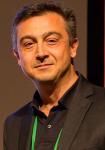 Multimedia Search: From Relevance to Utility
Multimedia Search: From Relevance to Utility
Alan Hanjalic (TU Delft, Netherlands).
This lecture will provide an insight into the concepts, methods and approaches underlying the
development of modern multimedia search technology. The lecture will start with an overview of the
main issues that need to be taken into account in order to optimally satisfy user’s needs when
searching in multimedia data collections. Then the focus will shift to multimodal reranking that can
help improve the relevance of top-ranked search results. Finally, the modelling of a user’s search
intent will be discussed, together with the ways of deploying intent models in order to maximize the
utility of the search results.
Alan Hanjalic is a professor of computer science and head of the Multimedia Computing Group at the
Delft University of Technology, The Netherlands. His research interests and expertise are in the fields
of multimedia information retrieval and recommender systems, in which he (co-)authored more than
150 publications, including two books. In 2012, he was awarded the Antoni van Leeuwenhoek Chair,
which is "reserved for the best young scientists at the Delft University of Technology"
(quote: TU Delft).
He is also co-recipient of the Best Paper Award at the ACM Conference on Recommender Systems
(RecSys) 2012, of the Multimedia Grand Challenge Award at the ACM International Conference on
Multimedia (ACM Multimedia) 2015 and of the Overall Winner Award at the ACM RecSys 2010
CAMRa Challenge. In 2016, he was named IEEE Fellow for his contribution to the field of multimedia
information retrieval. Prof. Hanjalic is Associate Editor-in- Chief of the IEEE MultiMedia Magazine and
the Chair of the Steering Committee of the IEEE Transactions on Multimedia. In the past, he was an
appointed member of that Committee (2012-2014), and also an elected member of the IEEE Technical
Committee on Multimedia Signal Processing (2011-2013). Prof. Hanjalic has served as a member of
Editorial Boards of several scientific journals, among which the IEEE Transactions on Multimedia
(2006-2014), the IEEE Trans. on Affective Computing (2010-2016), ACM Transactions on Multimedia
(since 2015) and the Springer International Journal of Multimedia Information Retrieval (since 2011).
In addition, Prof. Hanjalic has also served on the organizing committees of major conferences in the
multimedia field, including the ACM Multimedia (General Chair 2009 and 2016, Program Chair 2007
and 2014), IEEE ICME (Program Chair 2012), ACM ICMR (Program Chair 2011) and ACM CIVR
(Program Chair 2008). Prof. Hanjalic was a keynote speaker a.o. at the IEEE International Workshop
on Multimedia Signal Processing, 2013, International Conference on Multimedia Modeling, 2012, and
at the Pacific-Rim Conference on Multimedia, Hong-Kong, December 2007.
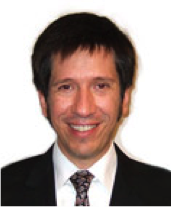 Insights from Big Data: Interaction, Design, and Innovation
Insights from Big Data: Interaction, Design, and Innovation
Alejandro Jaimes (Univ. Columbia and Acesio, USA).
Abstract: In recent years, our ability to process large amounts of data has increased significantly,
creating many opportunities for innovation. Having large quantities of data, however, does not necessarily
turn into actionable insights that make a difference for users in consumer applications. In this talk I will
give a quick overview of some ways in which "big data" can be used in industry, with a particular focus on
Human-Centered approaches to innovation. In particular, I will discuss how the combination of qualitative
and quantitative methods can be of benefit, giving examples around social media and giving an overview of
some of the areas of research I performed while I was at Yahoo. Within this context, I will outline a
blueprint for a research framework as it applies to innovation, and discuss specific technical approaches
within that framework. I will argue on the importance of taking a human-centered view and highlight what
I consider the most fundamental problems in computer science today from that perspective.
Alejandro (Alex) Jaimes is CTO and Chief Scientist at Acesio. He is a data scientist,
innovator, speaker, and engineering executive with 15+ years of international experience in research
(Columbia U., KAIST) and product impact at scale (Yahoo, Telefónica, IDIAP-EPFL, Fuji Xerox, IBM, Siemens,
and AT&T Bell Labs) in the USA, Japan, Chile, Switzerland, Spain, and South Korea. 100+ patents and
publications, Columbia University Ph.D. (Machine Learning, Computer Vision, Artificial Intelligence),
artist (photography, film, performance, new media). He focuses on large-scale data analysis to gain insights
into human behavior to design, build, and deliver business value in novel algorithms for products used by
millions of people.
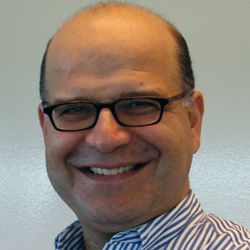 Better signal descriptions for better content understanding
Better signal descriptions for better content understanding
Aggelos K. Katsaggelos (Northwestern Univ., USA).
Signal understanding methods in general do not operate directly on the signals but on their suitable
representations instead. In this presentation we consider various signal representations and their effect
towards content understanding. We consider hand-engineered features as well as features learned
from the data. Notable examples of representations belonging to the first class are histogram of
oriented gradients and bag of words, while representations belonging to the second class are those
provided by dictionaries and deep neural networks. By end large the shallower hand-engineered
representations but also the dictionary based ones are better understood than the more complex deep
representations provided by deep neural networks. Towards obtaining a better understanding of image
representations provided by Convolutional Neural Networks (CNNs) but also other features, three
particular types of visualization will be described, namely, inversion, activation maximization, and
caricaturization. Such visualizations will be compared in terms of three reconstruction indices, average
reconstruction error, standard deviation of the reconstruction error, and classification consistency.
General conclusions will be drawn and open research problems will be discussed.
Aggelos K. Katsaggelos received the Diploma degree in electrical and mechanical engineering from the
Aristotelian University of Thessaloniki, Thessaloniki, Greece, in 1979 and the M.S. and Ph.D. degrees both
in electrical engineering from the Georgia Institute of Technology, Atlanta, Georgia, in 1981 and 1985,
respectively. In 1985 he joined the Department of Electrical Engineering and Computer Science at Northwestern
University, Evanston, IL, where he is currently professor, holder of the AT&T Chair (previously holder of the
Ameritech Chair). He is also the Director of the Motorola Center for Seamless Communications, an Academic
Affiliate Staff, Department of Medicine, at NorthShore University HealthCare System, an affiliated faculty
at the Department of Linguistics, Northwestern University, and an appointee at the Argonne National Laboratory.
During the 1986-1987 academic year he was an assistant professor at Polytechnic University, Department of
Electrical Engineering and Computer Science, Brooklyn, NY. His current research interests include multimedia
signal processing (e.g., image and video recovery and compression, audio-visual speech and speaker recognition,
indexing and retrieval), multimedia communications, computer vision, pattern recognition, and DNA signal
processing. He has published extensively in these areas. Prof. Katsaggelos has served the IEEE and other
professional Societies in many capacities. Dr. Katsaggelos is a Fellow of the IEEE (1998) and SPIE (2009),
the co-inventor of seventeen international patents, the recipient of the IEEE Third Millennium Medal (2000),
the IEEE Signal Processing Society Meritorious Service Award (2001), the IEEE Signal Processing Society
Technical Achievement Award (2010), and a co-recipient of an IEEE Signal Processing Society Best Paper
Award (2001), an IEEE ICME Best Paper A ward (2006), an IEEE ICIP Best Paper Award (2007), and an ISPA
Best Paper Award (2009). He was a Distinguished Lecturer of the IEEE Signal Processing Society (2007-08).
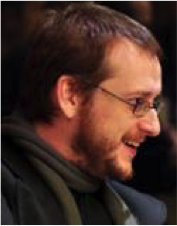 Perception and quality of experience in media
Perception and quality of experience in media
Patrick Le Callet (Polytech’ Nantes, France).
Abstract: Signals vs. Human Senses: perception and Quality of Experience in media Since the
late 90’s, the notion of "Quality of Experience" (QoE) has gained large attention
in different application contexts, including media industry. In particular, the QoE concept
has emerged to enhance the concept of image quality to fully cover more dimension of the
user experience of media service. In this talk, I first introduce how the concepts of QoE
appear in the field of image quality. I then discuss the existing definitions and concepts
of QoE, with a focus on the influencing factors. I present various use cases addressing the
way to measure QoE and to predict. A special emphasis is provided on two particular media
applications: 1) the factors of Influence on the perception Profile Images in social networks, 2)
the role of emotion on memorability of images.
Patrick Le Callet is born in 1970. He received both an M.Sc. and a PhD degree in
image processing from Ecole polytechnique de l’Université de Nantes.
He was also a student at the Ecole Normale Superieure de Cachan where he sat the "Aggrégation"
(credentialing exam) in electronics of the French National Education. He worked as an Assistant Professor
from 1997 to 1999 and as a full time lecturer from 1999 to 2003 at the Department of Electrical Engineering
of Technical Institute of the University of Nantes (IUT). Since 2003 he teaches at Ecole polytechnique de
l’Université de Nantes (Engineering School) in the Electrical Engineering and the Computer
Science departments where is now a Full Professor. Since 2006, he is the head of the Image and Video
Communication lab at CNRS IRCCyN, a group of more than 35 researchers. He is also the Scientific director
of the cluster "Ouest Industries créatives", Network on Research, Education &eamp; Innovation
of Région Pays de Loire on Creative industries. He is mostly engaged in research dealing with the
application of human vision modeling in image and video processing. His current centers of interest are
Quality of Experience assessment, Visual Attention modeling and applications, Perceptual Video Coding and
Immersive Media Processing. He is co-author of more than 250 publications and communications and
co-inventor of 16 international patents on these topics. He serves or has been served as associate editor
or guest editor for several Journals such as IEEE TIP, IEEE STSP, IEEE TCSVT, SPRINGER EURASIP Journal on
Image and Video Processing, and SPIE JEI.
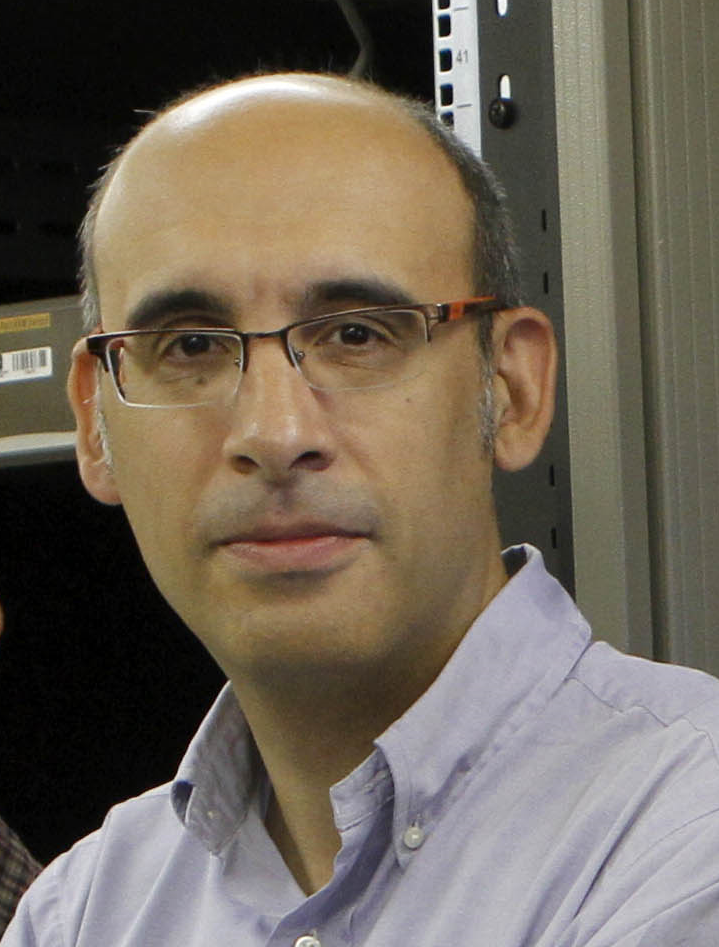 Grissom in awe: the CSI effect and media forensics
Grissom in awe: the CSI effect and media forensics
Fernando Pérez–González (Univ. Vigo, Spain).
We have all seen it on TV: by hectically typing on a computer keyboard, the CSI guys are able to enhance
a low–quality image up to a point where the perpetrator’s face (including his moles and pimples) is clearly
visible. Surely, it is an exaggeration, but it has already created a lot of trouble in court, as the
jurors’ expectations from prosecutors have skyrocketed. This is called "The CSI Effect". Paradoxically,
Grissom would be shocked to learn the latest advances in multimedia forensics, as there is often a level
of analysis that brings about much more than meets his eye. And a good part of the analysis is done
without human intervention, so the ever-busy cop could attend other businesses while the computer
crunches numbers. This talk will give an overview of these new tools, their application domains and their
limitations, so that the next time you watch a movie you can judge for yourself whether they’re trying
to fool you.
Fernando Pérez–González received his Ph.D. in Telecommunication Engineering from the
University of Vigo, Spain, in 1993. He is Professor at the Signal Theory and Communications Department,
University of Vigo since 2000, where he leads the Signal Processing and Communications Group (GPSC).
In 2007-2014 he was the founding Executive Director of the Galician Research and Development Center in
Advanced Telecommunications (GRADIANT), a semi-private research center. From 2009-2012 he was the holder
of the prestigious Prince of Asturias Endowed Chair on Information Science and Technology at the University
of New Mexico (UNM).
His research interests lie in the crossroads of signal processing, security/privacy and communications,
in particular, those problems in which an adversary is present. Prof. Pérez–González has
coauthored more than 200 journal and conference papers, 15 international patents, and has participated
in 5 European projects related to multimedia security. He has served in the Editorial Board of several
international journals, including IEEE Trans. on Information Forensics and Security and IEEE Signal
Processing Letters.
He is a member of the Galician Royal Academy of Sciences and an IEEE Fellow.
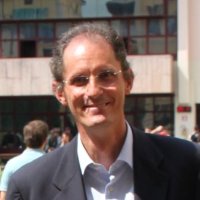 How to sell your research
How to sell your research
Vittorino Filippas (Free Lance Advisor, Italy).
The best way to sell a product/service consists in conceiving it in such a way that your prospects cannot
live without it. Easy to be told then done. Established companies in mature market still fail to be
successful on the new products they launch. 98% of startups fail mainly because nobody wants the products
they offer. The secret of being consistently successful lies in your ability to become your prospect
customer; physically, culturally, mentally. We will talk about the importance of identifying precisely your
CPS: the (potential) Customer, the Problem (the unspoken need), the Solution. To know why Customer
Centricity is my mantra you can see this link.
The goal of the talk is to make researchers aware that to sell their achievements or to turn their IP into
business they need to open your mind and understand deeply who can have benefits from your research results.
Vittorino Filippas Engineer by education, has a 30 year international experience as COO
and CEO of firms involved in the field of automotive and shipbuilding business. His experience ranges over
the fields of marketing & sales, strategic sourcing, business outsourcing, manufacturing delocalization,
licence & purchase of technology, IPR protection, managing partnerships and strategic alliances and M&A
throughout Europe, US, Canada, Brazil, Argentina, India, China, Thailand, Malaysia, Taiwan and Japan.
Since 2005 he runs his own consulting business working as temporary CEO and strategic advisor of firms to
re-focus their strategy leveraging on innovation, to develop their business internationally, to conceive
and structure their alliances or rightsize their organizations.
Vittorino currently combines his entrepreneurial career with coaching and lecturing in the fields of
Internationalization, innovation and entrepreneurship. He is lecturer of the course of "International
Entrepreneurship" and the hands-on laboratory
"Start Up Lab" within the
Master in International Management and the Master in Innovation at the University of Trento.
My approach to life is enthusiastic, energetic and goal oriented. I have been told to be an enthusiastic
motivator both in running organizations and in I&E coaching and mentoring.
TEDx speaker: see this link.
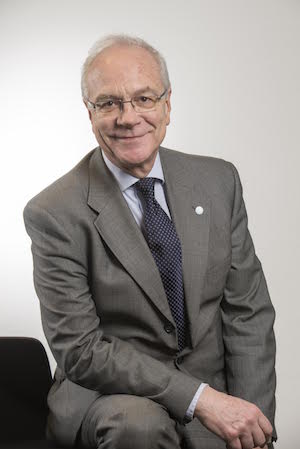 A glance into the future of ICT
A glance into the future of ICT
Roberto Saracco (EIT–Digital and IEEE FDC Chair, Italy).
Technology has moved from being a scarce resource to an abundant one. This has changed the rules
of the game both in research and in innovation. This is true in all technology areas but even more so
in the ICT area. We have reached the end of the line for the Moore’s law, and yet new opportunities are
emerging and, although in different forms, the evolution pace is not slowing down.
The talk has the goal to share the direction of evolution in ICT considering not just the technological
drivers but also the economic ones. We are reaching a disruption point that in the coming decades will
challenge our very concept of life giving rise to new ethical challenges never before faced.
Understanding the evolution in ICT means understanding the whole context and how research and innovation
connect with one another, as well as the evolution from the bit economy to the data economy.
Roberto Saracco is the President of EIT ICT Labs Italy and Node Director of EIT Digital Italy
based in Trento (European Institute for Innovation and Technology). Up to December 2011 he was the Director
of the Future Centre in Venice, responsible for innovative telecommunications architectures and scientific
communications reporting directly to the Strategy Officer of Telecom Italia. In 2001 he became director of
the Future Centre, a research centre focusing on the economic impact of innovations in the
telecommunications area. During 1999 and 2000, Roberto proposed and delivered a World Bank project in the
InfoDev framework to speed entrepreneurship in Latin American countries, and prior, 1999 and 2000, he
proposed and carried out a World Bank project in the InfoDev framework to foster entrepreneurship in
Latin America countries. Roberto chaired the Visionary Group (1996-1997) on Super Intelligent Networks to
steer the cooperative research at the European Union (EU) level beyond the year 2000. He has recently
served as member of the Internet 2020 Strategy Group and European Research Network (GEANT) expert group.
In 1994 he launched the Marketing & Communications area in CSELT, ensuring dissemination of innovation.
In the eighties, Roberto led research in Telecommunications Management in CSELT, and actively participated
in standardization activities at CCITT, in the area of formal description techniques. Prior this role,
he was involved in software design for the first Italian SPC systems. He is a senior member of IEEE, that
he joined over 20 years ago. In the last 15 years he has held several leading roles and conducted a number
of DLTs and DSPs. Currently he is the Director of the Future Direction Committee. He has published over
100 papers in journals and magazines, six books including "The Disappearance of Telecommunications", which
was published in the USA by IEEE press, over 15 ebooks, the most recent ones freely available on the
iBook Store, and several articles in the scientific section of daily newspapers. He has also delivered
speeches and keynotes at many international conferences. At several stages in his career, Roberto has
taught at Universities in Italy and around the world on the subject of Telecommunications, and most
recently, on the New Economy.
You can follow is daily blog at www.eitdigital.eu/blog/
